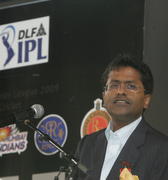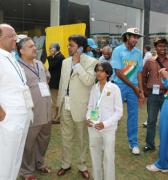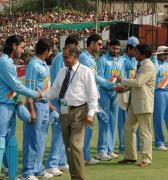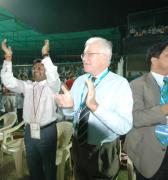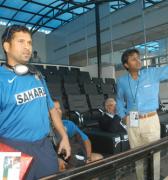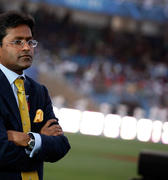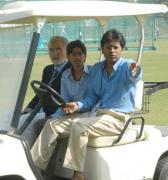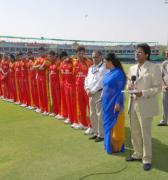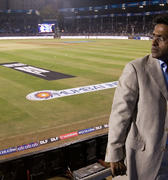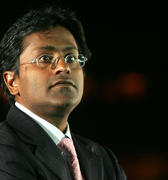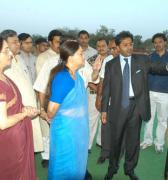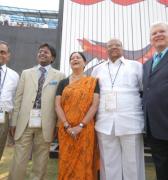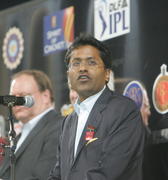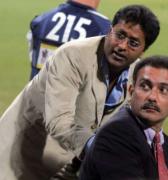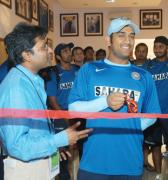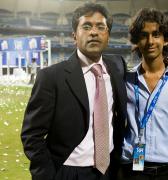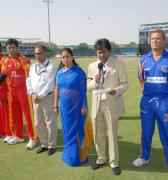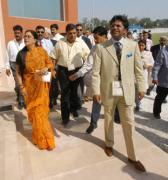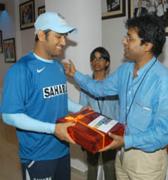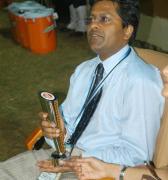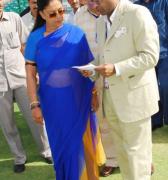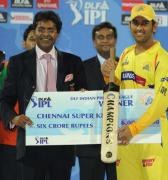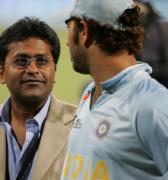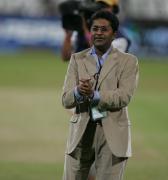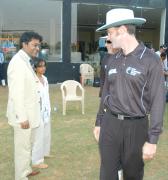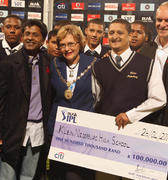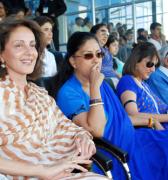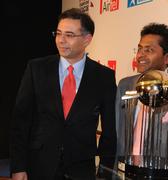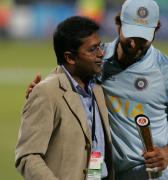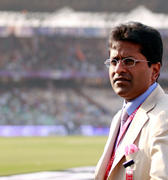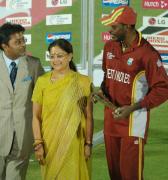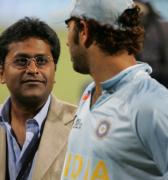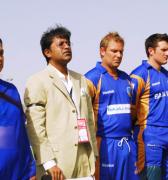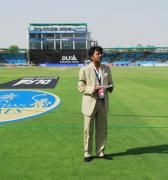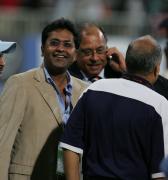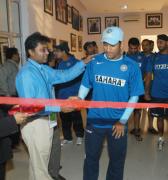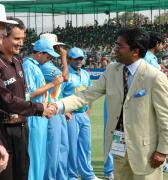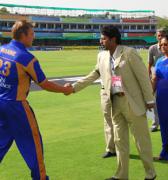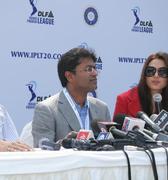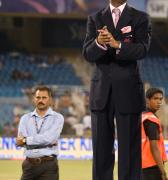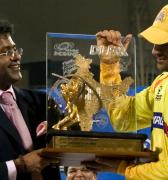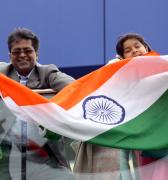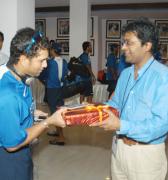Money, contracts and a cancelled Ranji season: BCCI needs to urgently step up for domestic cricket
Saturday 20 February 2021
The IPL auction has just ended and we have seen some crazy money being spent; money that many failed to make sense of; money that some felt was deserved and money that inspires many rags to riches stories too. But look beyond that money... look beyond the IPL and what do you see?
A player worried about not having enough money to buy food supplements and a gym membership. A scorer worried about tuition fees for his kids, a video analyst worried about his EMI, an umpire concerned about losing out on earnings of a whole season.
In 2012, the Board of Control of Cricket in India, as part of a one-time benefit scheme, gave Rs 30 lakh to Indian cricketers who have played 100 or more first-class games. Those who played between 75 and 99 matches received Rs 25 lakhs. The lowest base price for a player at the IPL auction is Rs 20 lakh.
It has been about a couple of weeks since the BCCI announced that they will not be holding the Ranji Trophy this year due to Covid-19-related logistical challenges. The only domestic cricket thus far has been in the T20 format for Syed Mushtaq Ali Trophy. And according to BCCI, they will only be able to host the Vijay Hazare Trophy (50-over cup or men), Vinoo Mankad Trophy (U-19) men and one-day competition for women.
While it might seem a fair call given that there are 38 teams that take part in Ranji Trophy and creating a bio-security bubble for almost two months, the financial uncertainty brought about by the call has once again put the spotlight on the lack of central contracts for not only the players but other stake-holders in the game.
Not everyone has a job, an IPL contract, or a supportive parent or spouse to help them see through the lean financial phase.
Take the case of a player. BCCI pays Ranji Trophy players Rs 35,000 per day per game. That means Rs 1.4 lakhs per match. Now if a player makes it to the playing XI for all games in the league stage, he stands to gain approximately Rs 12-13 lakhs. And the money is even more if his team makes it to the knockout stage.
A player from one of the newer teams into the Ranji fold told Scroll.in that he was planning to use the money for personal training and buying better equipment. Another said that he might not feel too much of a financial pinch as both his parents have jobs, but he was planning to spend the money this year on a better diet and personal training to improve skills. This individual had a good last season and was hoping to break into the zonal and India A side with a good show this season too, but now will have to wait a bit longer to achieve that goal.
While youngsters without IPL contracts were hoping to use the money for their personal expenses, for senior pros who have no chance of getting an IPL contract or an India call-up, this Rs 12-13 lakh is about running the household and the future investments. This loss of income will hit them even harder. Irrespective of whether one is a youngster or a journeyman, both sets are hoping that the BCCI would come up with some sort of compensation to help them tide over the year. There have been some talks in the BCCI circles in that regard but nothing concrete has been announced.
Both sets are also left wondering about the lack of central contracts offered by state associations. This was one of the bigger promises by Sourav Ganguly when he became the BCCI president but nothing has happened on that front as of now. Some associations like Punjab have spoken about it but have failed to walk the talk. As always, hope still floats and players are hoping for some compensation from the BCCI.
While players remain the biggest stake-holders, there are others too who will be taking a financial hit.
Take the case of umpires, who can make a maximum of Rs 40,000 per day during the Ranji Trophy. According to an umpire that Scroll.in spoke to, the umpires are divided into four groups and umpires from A and B group generally get to officiate Ranji matches. There are 20 umpires in Group A and 25 in Group B. Group A umpires get Rs 40,000 per day while Group B umpires get Rs 30,000 per day.
Sometimes toppers from Group C also get to officiate Ranji games. On average, a top umpire gets 8-9 Ranji Trophy games a season and that adds up to a loss of Rs 13-14 lakh this season.
The daily compensation remains the same for all domestic games. Like the players, umpires are also hoping that the BCCI would compensate for the loss.
The third most important person during a cricket game is the scorer. He or she is the record keeper of all the on-field exploits but this group is staring at massive losses too.
These men and women earn Rs 10,000 per day during a domestic game. During the Ranji Trophy season they expect to get three games and thus staring at a loss of anything between Rs 80,000 to Rs 1.20 lakhs just from the cancelled Ranji season.
This loss is substantially more if one considers the cancellation of various age-group and club cricket games for both men and women this season.
Another set of people who will suffer financial loss is video analysts who help the match referees make the right call during close run-out and stumping calls. These analysts also prepare a DVD of umpiring decisions during the game and send them to the umpires’ academy in Nagpur.
A senior analyst makes Rs 15,000 per day while a junior makes Rs 10,000 per match day. On average, they expect to get 30 match days but this number can go up to even 100. Then, there are match referees, coaches, support staff like trainers and physios, commentators and groundsmen and women who depend on the earnings from the domestic season.
And some of these groups are looking towards BCCI for help which might be on its way sooner rather than later. Domestic players getting central contracts is a norm worldwide, be it Bangladesh, West Indies or Australia. In Bangladesh, the national board pays its domestic first-class cricketers a monthly salary. In England, the Counties offer a separate red-ball and white-ball contract. In Australia, some states are offering central contracts to women cricketers too.
No one can argue that BCCI doesn’t have money to look after players in 38 teams across gender and age. It has a hefty TV rights deal both for international cricket and the IPL. It also earns money from various other sources such as kit sponsorship and selling in-stadia advertisement rights. State associations get an annual share from the BCCI kitty and the majority of them spend a minority of that amount on cricketing activities.
The pandemic, it can be argued, has given the BCCI the perfect opportunity to help all the stake-holders not only out of the current predicament but also secure them against such calamities in the future.
The IPL auction has just ended and we have seen some crazy money being spent; money that many failed to make sense of; money that some felt was deserved and money that inspires many rags to riches stories too. But look beyond that money... look beyond the IPL and what do you see?A player worried about not having enough money to buy food supplements and a gym membership. A scorer worried about tuition fees for his kids, a video analyst worried about his EMI, an umpire concerned about losing out on earnings of a whole season.
In 2012, the Board of Control of Cricket in India, as part of a one-time benefit scheme, gave Rs 30 lakh to Indian cricketers who have played 100 or more first-class games. Those who played between 75 and 99 matches received Rs 25 lakhs. The lowest base price for a player at the IPL auction is Rs 20 lakh.
It has been about a couple of weeks since the BCCI announced that they will not be holding the Ranji Trophy this year due to Covid-19-related logistical challenges. The only domestic cricket thus far has been in the T20 format for Syed Mushtaq Ali Trophy. And according to BCCI, they will only be able to host the Vijay Hazare Trophy (50-over cup or men), Vinoo Mankad Trophy (U-19) men and one-day competition for women.
While it might seem a fair call given that there are 38 teams that take part in Ranji Trophy and creating a bio-security bubble for almost two months, the financial uncertainty brought about by the call has once again put the spotlight on the lack of central contracts for not only the players but other stake-holders in the game.
Not everyone has a job, an IPL contract, or a supportive parent or spouse to help them see through the lean financial phase.
Take the case of a player. BCCI pays Ranji Trophy players Rs 35,000 per day per game. That means Rs 1.4 lakhs per match. Now if a player makes it to the playing XI for all games in the league stage, he stands to gain approximately Rs 12-13 lakhs. And the money is even more if his team makes it to the knockout stage.
A player from one of the newer teams into the Ranji fold told Scroll.in that he was planning to use the money for personal training and buying better equipment. Another said that he might not feel too much of a financial pinch as both his parents have jobs, but he was planning to spend the money this year on a better diet and personal training to improve skills. This individual had a good last season and was hoping to break into the zonal and India A side with a good show this season too, but now will have to wait a bit longer to achieve that goal.
While youngsters without IPL contracts were hoping to use the money for their personal expenses, for senior pros who have no chance of getting an IPL contract or an India call-up, this Rs 12-13 lakh is about running the household and the future investments. This loss of income will hit them even harder. Irrespective of whether one is a youngster or a journeyman, both sets are hoping that the BCCI would come up with some sort of compensation to help them tide over the year. There have been some talks in the BCCI circles in that regard but nothing concrete has been announced.
Both sets are also left wondering about the lack of central contracts offered by state associations. This was one of the bigger promises by Sourav Ganguly when he became the BCCI president but nothing has happened on that front as of now. Some associations like Punjab have spoken about it but have failed to walk the talk. As always, hope still floats and players are hoping for some compensation from the BCCI.
While players remain the biggest stake-holders, there are others too who will be taking a financial hit.
Take the case of umpires, who can make a maximum of Rs 40,000 per day during the Ranji Trophy. According to an umpire that Scroll.in spoke to, the umpires are divided into four groups and umpires from A and B group generally get to officiate Ranji matches. There are 20 umpires in Group A and 25 in Group B. Group A umpires get Rs 40,000 per day while Group B umpires get Rs 30,000 per day.
Sometimes toppers from Group C also get to officiate Ranji games. On average, a top umpire gets 8-9 Ranji Trophy games a season and that adds up to a loss of Rs 13-14 lakh this season.
The daily compensation remains the same for all domestic games. Like the players, umpires are also hoping that the BCCI would compensate for the loss.
The third most important person during a cricket game is the scorer. He or she is the record keeper of all the on-field exploits but this group is staring at massive losses too.
These men and women earn Rs 10,000 per day during a domestic game. During the Ranji Trophy season they expect to get three games and thus staring at a loss of anything between Rs 80,000 to Rs 1.20 lakhs just from the cancelled Ranji season.
This loss is substantially more if one considers the cancellation of various age-group and club cricket games for both men and women this season.
Another set of people who will suffer financial loss is video analysts who help the match referees make the right call during close run-out and stumping calls. These analysts also prepare a DVD of umpiring decisions during the game and send them to the umpires’ academy in Nagpur.
A senior analyst makes Rs 15,000 per day while a junior makes Rs 10,000 per match day. On average, they expect to get 30 match days but this number can go up to even 100. Then, there are match referees, coaches, support staff like trainers and physios, commentators and groundsmen and women who depend on the earnings from the domestic season.
And some of these groups are looking towards BCCI for help which might be on its way sooner rather than later. Domestic players getting central contracts is a norm worldwide, be it Bangladesh, West Indies or Australia. In Bangladesh, the national board pays its domestic first-class cricketers a monthly salary. In England, the Counties offer a separate red-ball and white-ball contract. In Australia, some states are offering central contracts to women cricketers too.
No one can argue that BCCI doesn’t have money to look after players in 38 teams across gender and age. It has a hefty TV rights deal both for international cricket and the IPL. It also earns money from various other sources such as kit sponsorship and selling in-stadia advertisement rights. State associations get an annual share from the BCCI kitty and the majority of them spend a minority of that amount on cricketing activities.
The pandemic, it can be argued, has given the BCCI the perfect opportunity to help all the stake-holders not only out of the current predicament but also secure them against such calamities in the future.
(Courtesy: Scroll)

ICC lacks strong leadership in current times: ex-CEO Lorgat
The former ICC boss said barring Khawaja's peace slogans on shoes showed ICC lacked consistency in applying its rules
Waugh warns cricket boards for ignoring Test cricket
Australia Great Warns ICC, BCCI Over 'Irrelevant Legacy'




















